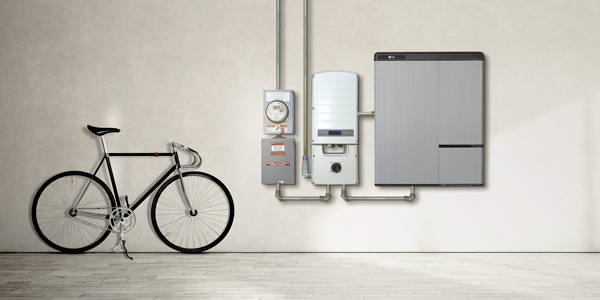By Anne Hoskins and Dan Dolan
Open markets drive competition. Competition drives innovation and affordability. Case in point: Today, more and more consumers are utilizing innovative battery solutions — with many powered by rooftop solar — to provide clean energy to homes and businesses. In the coming weeks, regulators will consider proposals by utilities in Massachusetts and New Hampshire that seek to fully control customer-owned batteries, or seek to reach into peoples’ homes and actually own batteries. There is no reason for regulators to allow utility control or ownership of generation and storage resources that can be supplied competitively. With no natural monopoly to regulate or market failure to fix, enabling utility ownership and control will serve only to stifle innovation and impede competitive solutions. We urge regulators to consider a better future.
The way Americans make and use electricity is in the midst of a remarkable evolution. For more than a century, we were unable to store electricity at our homes or businesses the way we store gasoline or recharge devices like our cell phones. Energy needed to be generated and consumed simultaneously. As a result of steep cost reductions in technology and competitive innovation, we are entering an exciting new era of empowerment. Consumers and businesses across the country are pairing batteries with rooftop solar. Large power plants are also now pairing with batteries to smooth spikes in demand. These new resources can enter markets, lowering costs for all consumers.
Twenty years ago, many states unleashed innovation by restructuring and creating competitive markets, no longer allowing monopoly utilities to own generation. That policy choice helped pave the way for consumers to benefit from electricity supply options and unleashed fierce competition in how electricity is produced. The result? More efficiency. Thanks to increased competition in the marketplace, today it takes three plants to generate the same amount of electricity as it used to take four to generate. This in turn helped lower the price to produce power dramatically, though consumers’ bills are still increasing, as utilities continue distribution and transmission spending and charge us more to transmit power. These efficiency gains and competitive investments have also helped power plants in New England drive down carbon dioxide emissions by more than 40% since 1990, now representing only half of the emissions of the transportation sector. The framework of a competitive and dynamic marketplace set the stage for more competitive storage options.
But the glide path for consumers and competitive markets is riddled with bumps along the way. Some utilities are seeking to own batteries in peoples’ homes and businesses. Others are requesting the right to the energy in a consumer’s battery, at the very least. Their goal? To receive returns for their investors by controlling storage that was funded by consumer and business investments. In other words, utilities want to take control of a family’s home battery, which was charged by the family’s home solar system, and bid that electricity into the competitive wholesale markets themselves. That is anticompetitive and counter to public policy goals that encourage investments in a cleaner and more resilient electricity grid.
The New England Power Generators Association and residential solar and storage companies agree that utilities should not impede consumer energy and storage investments when there are competitive options available. Such utility ownership or control is a dramatic step away from open energy markets. Rate-based utility ownership of batteries stifles competition — both at the rooftop and large generator scale — and threatens to raise rates for everyone.
Let’s get this right. Dozens of innovative companies are already stepping up to replace portions of our aging energy infrastructure with innovative storage solutions — competitively and with increased flexibility for consumers and generators. At the same time, however, utilities are spending tens of billions of dollars annually on building poles and wires. Some of these investments are necessary to replace power lines and substations at the end of their useful life, but some can be avoided with distributed energy solutions and large-scale storage. Consumers will foot the bill for utility infrastructure now and for decades into the future — if we don’t allow competitive solutions to emerge. With the right policies in place, investments in competitive electricity supply and storage can improve resilience and affordability. By providing clear price signals, utilities or system operators can incentivize private storage assets, at all scales, to meet system demands. There is no need for utilities to own or control the assets.
As the National Energy Marketers Association, which represents global suppliers and major consumers of natural gas and electricity, wrote, “After nearly two decades of experience with competitive retail markets, it is abundantly clear that the anticompetitive impacts of monopoly utility participation in competitive energy markets … is poor public policy, is not in the public interest and deters and discourages the private capital investment and technology innovation.”[1]
Dan Dolan, President, New England Power Generators Association. NEPGA’s mission is to support competitive wholesale electricity markets in New England. We believe that open markets guided by stable public policies are the best means to provide reliable and competitively-priced electricity for consumers.
Anne Hoskins, Chief Policy Officer at Sunrun. Sunrun is the nation’s largest dedicated residential solar, storage and energy services company with a mission to create a planet run by the sun.
- “Comments of the National Energy Marketers Association.” State of New York Public Service Commission. Case 14-M-0101. Proceeding on Motion of the Commission in Regard to Reforming the Energy Vision. 9/22/14. http://documents.dps.ny.gov/public/Common/ViewDoc.aspx?DocRefId={929C1EFF-B6C6- 4779-934A-23EDD5DA11D2. ↑






